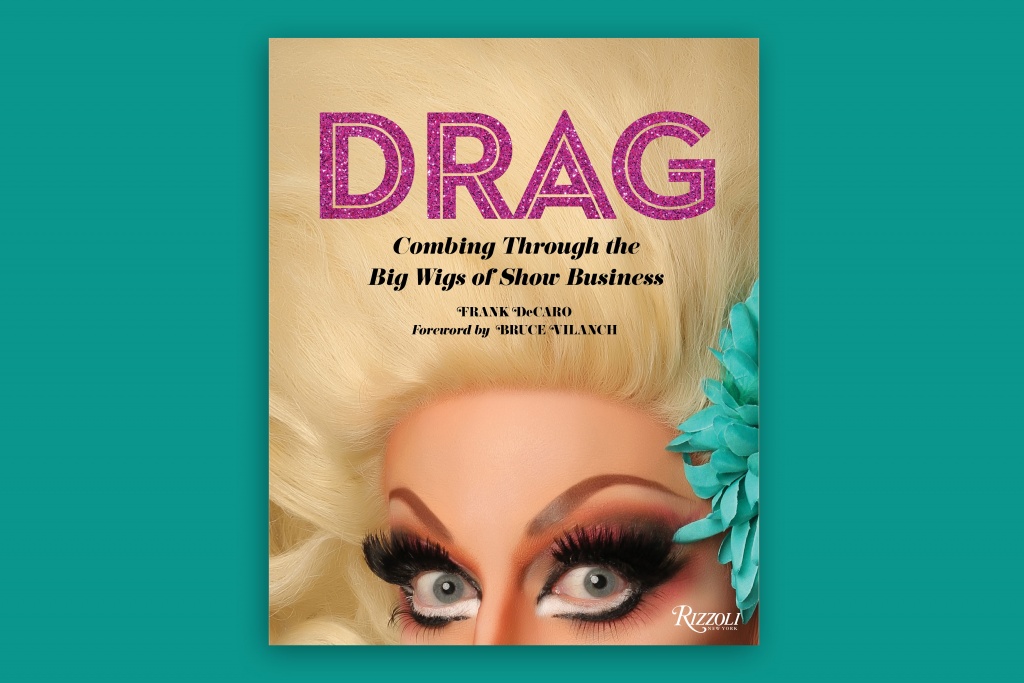Drag is everywhere. From gay bars to comedy clubs and children’s story times, the performance genrea has achieved cultural saturation.
Drag is everywhere. From gay bars to comedy clubs and children’s story times, the performance genrea has achieved cultural saturation.
It’s no surprise, then, that the world is ready for a stylish and colorful coffee table book, “Drag: Combing Through the Big Wigs of Show Business,” that takes readers on a century long journey of drag history.
Frank DeCaro, out author of books like “The Dead Celebrity Cookbook: A Resurrection of Recipes From More Than 145 Stars of Stage and Screen” and “Unmistakably Mackie: The Fashion and Fantasy,” said that he hadn’t considered writing a book about drag until someone suggested he do it. Then, though, he figured, he might be the perfect person for the task.
“I hadn’t really thought about whether I was the right person for it, and I had to do some soul searching about that,” said Decaro, a comedy performer and talk-radio host. But, DeCaro said, “It dawned on me that I had been a drag-hag since I was about 4 years old and first saw Herman Munster in drag on ‘The Munsters.’”
He explained that he’s always been “sort of taken with a man in a dress.” He watched drag performances on the big and small screens, whether it was Flip Wilson as Geraldine or “Some Like it Hot.”
“Any TV show in the 1960s, sooner or later men were going to end up in dresses for one reason or another,” DeCaro said.
Once he realized he had been following drag performers all of his life, it became apparent that he might, in fact, be the right person to author a book on drag.
“It really is a love letter to drag and my thank-you for so much entertainment throughout my entire life. There is no tea and no shade in this book. It’s a thanks for so much fun and glitter and inspiration.”
DeCaro said that even as a longtime drag lover, he discovered new corners of drag history.
“I was shocked at how early drag performances in the way that we know it now had been going on,” he said.
“There is a performer named Julian Eltinge who was the toast of New York City and was given his own Broadway theater in 1912. I’d always known that people had gravitated toward drag, but I had no idea of its ubiquity in show business. I knew that men had played female roles in Shakespeare and ancient Greece, but I had no idea that someone who would have hated the term ‘drag queen’ like Eltinge existed in 1912.”
DeCaro’s book dives deeply into drag’s history and describes how we see the genre’s influence in contemporary society.
“It was fascinating to me how much drag influenced and infiltrated the culture,” DeCaro said. “It was there whether it was the typical straight guy looking for a cheap apartment on ‘Bosom Buddies’ or the straight guy detective out catching a mugger on ‘Barney Miller.’ It’s fascinating to me that it’s woven into the culture as much as it is.”
But even with the expansiveness of the book (where else are you going to find Boy George and Bugs Bunny prominently featured side by side?), DeCaro conceded there’s too much history to cover in one book.
“You can’t do enough research with a topic this big, and you almost can’t wrap your arms around it,” he said. “No matter how much I found out, there was more that I didn’t know. At a certain point, you just have to say anything I left out is for the next guy who writes their drag book.”
Drag is more popular now than it ever has been, and DeCaro is happy to see so many drag performers reaping the benefits of such a high level of exposure.
“It’s never been as mainstream as it is now,” he said. “There is drag in so many places and ‘RuPaul’s Drag Race’ is a global phenomenon. That really was the game-changer.”
DeCaro said he also appreciates that drag performers are now perceived as the artists they always have been.
“Bianca Del Rio just announced that she’s playing Wembley Arena in Britain.That’s huge. It’s not this little underground secret. It’s really out there in the open.
“Wigstock started having drag queens performing in the afternoon of Labor Day weekend in the 1980s. That was where it all began: we’re not going to be pushed into the dark corner of a gay bar. We’re going to be right out there in the sunlight and look fabulous. That was the beginning of what we think of as modern drag.”
And now the sky is the limit, DeCaro said.
“The notion of what drag is has exploded.It can be a cisgender woman dressed as a drag queen. It can be an 11-year-old kid. It can be someone who has been at this for 60 years, like Dame Edna. It’s all of that. You can be a drag king, a drag queen, a bio queen, a drag kid or a character actor doing a crazed take on a pop-culture figure. The future of drag is a glittery smorgasbord, and everybody gets to be a part of it.
“Drag: Combing Through the Big Wigs of Show Business” by Frank DeCaro is available in stores now. For more information, visit www.frankdecaro.com.
